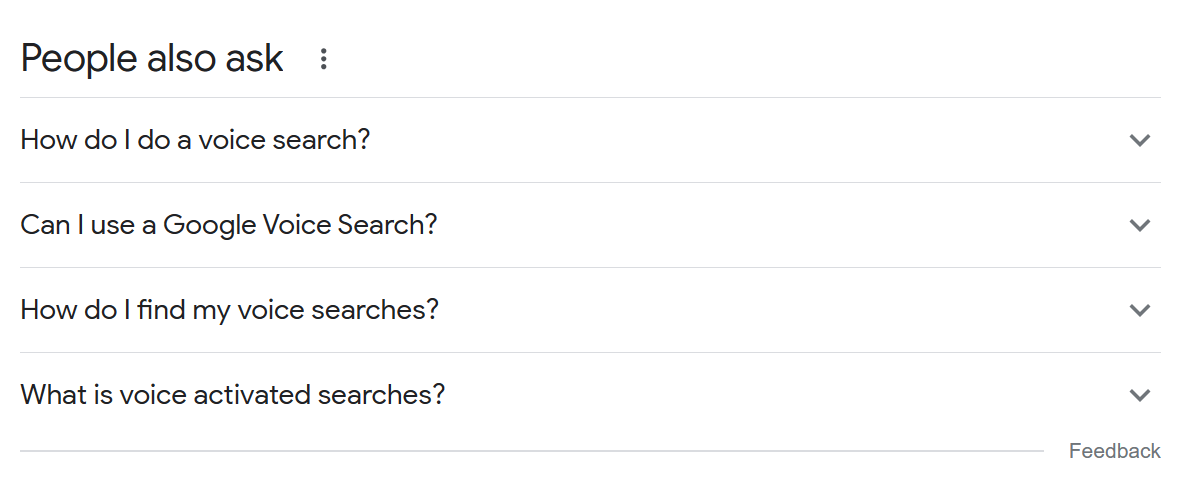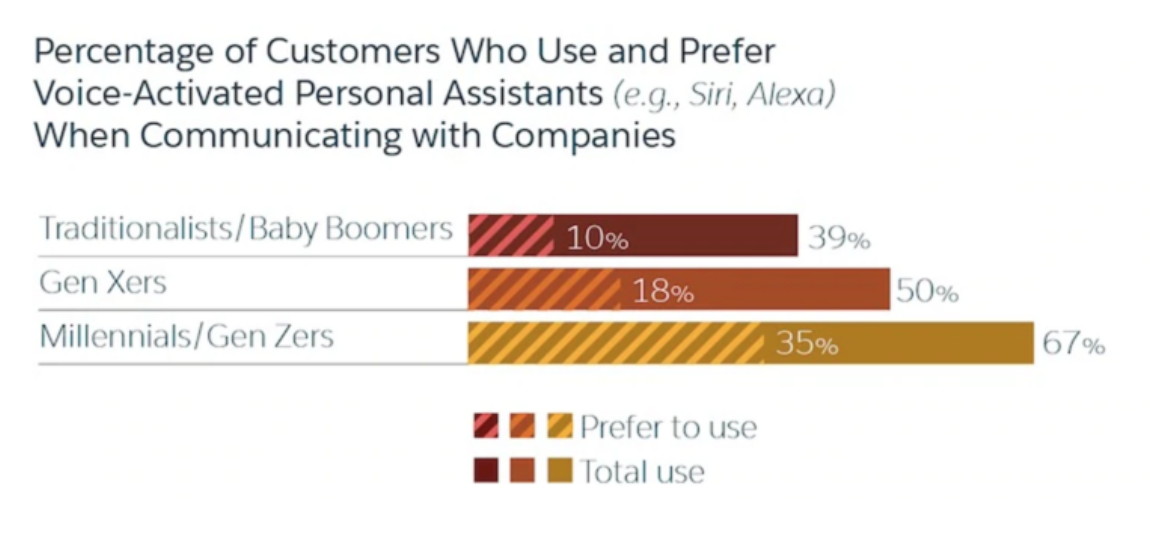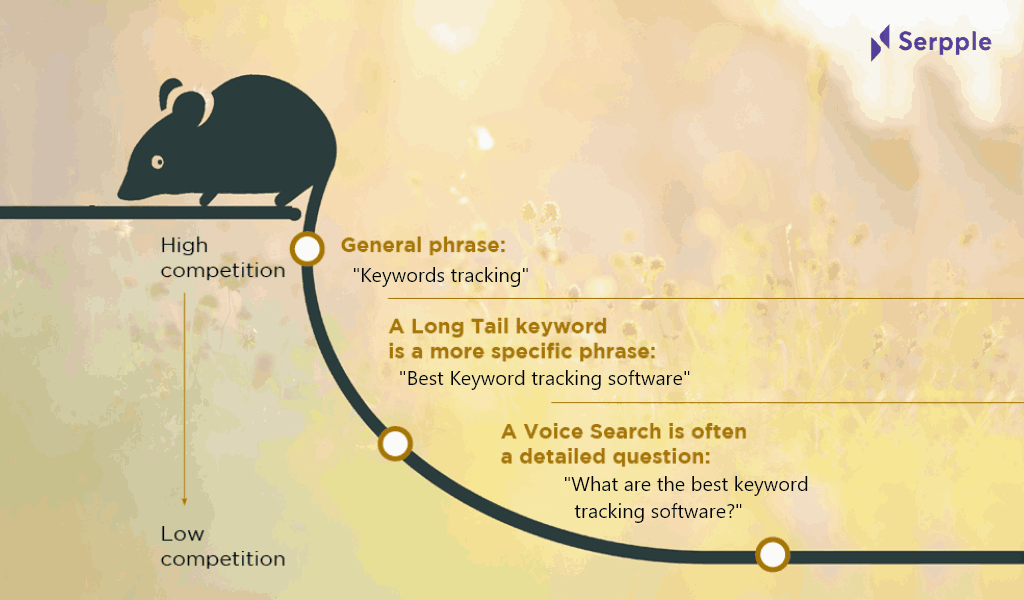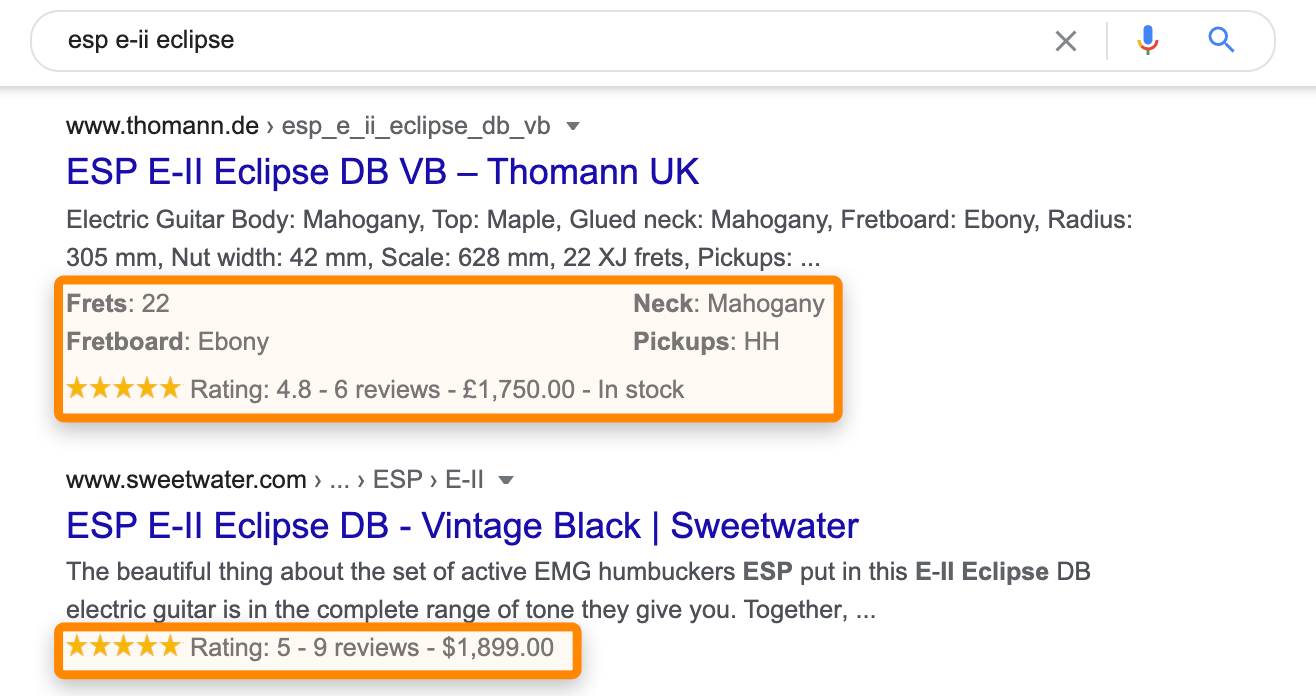How often have you asked Siri (or another virtual assistant) to find the answer to a question? Regardless of the answer, it’ll probably increase over the next few years.
In fact, if you look at voice search statistics and graphs of voice search users, you’ll see the number has increased by 190% since 2017 (i.e., there were 79.9 million voice search users in 2017, and in 2023, the number increased to 125.2 million).
And if you consider other things like:
- Ownership of smart speakers like Google Home has increased
- More people prefer the convenience of handsfree tasks
- Voice search technology has widespread adoption
- Natural Language Processing is evolving
- Voice search results load quickly
We realize that the popularity of voice search is the next big thing. And optimizing for it should be on every marketer’s 2024 to-do list. So, here are a few ways you can optimize for voice search.
1. Optimize for “People Also Ask” queries
Since most voice search queries tend to have What, Why, When, Who, Where, and How questions, experts often recommend creating FAQ pages to target these questions. For content for voice search, you naturally want to integrate these questions within your existing articles.
A great way to know which frequently asked questions you should target is to use the “People Also Ask” section for inspiration or leverage a tool like AlsoAsked, which shows all the queries surrounding the long-tail keywords you want to target.

2. Try to rank for featured snippets
More often than not, if you ask Siri or another device a question, the answer that comes up is the one from the featured snippet.
Just for reference, this is what a featured snippet looks like — short, concise answers to common questions.

This is the reason why experts recommend optimizing for featured snippets, and here are a few ways to do that:
- Optimize your Google My Business (also known as your Google Business) Profile
- Integrate relevant, high-performing keywords in your business listings
- Format with the proper structure (H1, H2, H3, etc.)
- Use easy-to-flow language that’s free of jargon
- Leverage tools like Ahrefs to track ranking
- Answer multiple questions in your article
3. Provide context to your queries
If content is king, then context is the kingdom because your content is irrelevant to the search engine until and unless it provides context.
This is why SEO experts recommend becoming more local with your search queries (i.e., if you’re talking about taxes, you can create different city and state-specific articles to provide more context).
You can also do more research on your target persona, their interactions, and conversational style to find out how to structure your content and/or which tones and conversation styles to use.

4. Make your content mobile-friendly
Voice search mainly takes over mobile phones as opposed to desktops and/or other devices. So, search engines prefer to rank sites that follow search engine optimization (SEO) practices that are mobile-friendly.
Also, since voice searches tend to load fast, ensure your site loading speed on mobile phones is smooth.
5. Write in a conversational manner
Here’s the thing: When looking up search queries, people are going to talk as they usually do.
What makes voice search and other search queries different is that people oftentimes tend to type a mix of words they think the search engine will need to find answers to their queries. Still, when it comes to voice search, they talk like they usually do (read: conversational language).
This brings the onus on the companies on the search engine (aka folks like you and I) to optimize for voice search queries, keeping people’s conversational styles in mind.
Experts recommend focusing on long-tail conversational keywords as they usually tend to target the intent voice searchers come with. There’s also the benefit of such keywords having low competition and high conversion rates, but that’s a story for another day.

6. Make your data structured
Structured data often tends to look something like this:

That’s to say, content provides the search engine and its algorithms with all the signals they need to show they’re a trusted authority. Once the algorithms believe you, they’ll automatically increase your page ranking.
SEO experts recommend employing structured data markups, leveraging solutions like Google’s Knowledge Graph and Structured Data Testing Tool, and creating content with semantic search in mind.
7. Follow other SEO best practices
When it comes to ranking for Google Assistant voice search, the first result on the SERP (search engine results page) often tends to take the cake, which is why you need to combine all the best SEO practices to ensure you rank on the first page, if not for the first place.
On that note, here are a few SEO best practices you can keep in mind to optimize for any kind of search query (and not just voice search):
- Always consider the ICP (ideal customer profile) before creating the content piece
- Create relevant metadata (i.e., meta title and meta description)
- Regularly A/B test to see which elements are performing well
- Add internal and external links to add trust to your articles
- Structure your content in a way that’s easily digestible
- Use the EEAT algorithm to your advantage
- Optimize your site’s loading speed
- Add alt text to your images

Optimize for voice searches with the help of SEO Hero
Voice search isn’t a one-day, set-it-and-forget-it strategy. You can’t just implement it and leave the rest to the algorithms.
You’ll need to invest time, effort, and money to ensure your content topics are ranking well for voice search (and other search queries).
Voice recognition technology is here to stay. It improves the user experience, and as a result, voice-activated devices have captured the hearts of your customers.
To keep up with the ever-increasing demand for this search channel, you’ll need the support of one of the following:
- An in-house SEO team
- An agency that can do the job for you
If option B is a better fit for your business, that’s where SEO Hero can help. We provide on-demand SEO services for different marketing strategies.
To see how we can help your brand specifically, get in touch with our team. We’ll do the heavy lifting to increase your visibility in voice search.
Soon, prospects and customers will hear your business information as the answer to the questions they ask Siri or Alexa.

Joanne Camarce grows and strategizes B2B marketing and PR efforts. She loves slaying outreach campaigns and connecting with brands like G2, Wordstream, Process Street, and others. When she’s not wearing her marketing hat, you’ll find Joanne admiring Japanese music and art or just being a dog mom.




